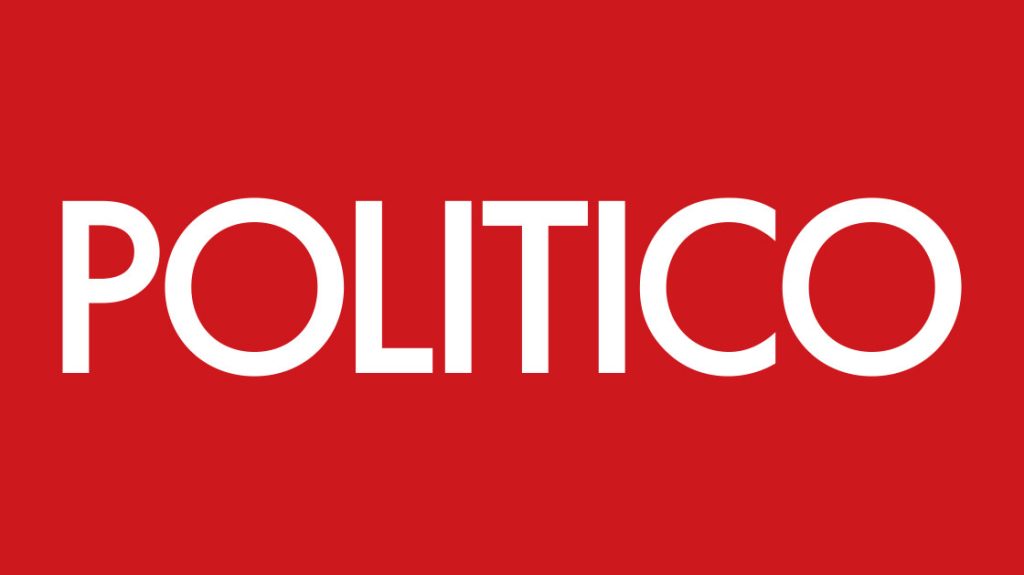Editor’s note: Morning Money is a free version of POLITICO Pro Financial Services morning newsletter, which is delivered to our subscribers each morning at 5:15 a.m. The POLITICO Pro platform combines the news you need with tools you can use to take action on the day’s biggest stories. Act on the news with POLITICO Pro.
The Federal Reserve’s interest rate hikes haven’t knocked the labor market to the pavement. But for Generation X, reality is starting to bite.
Workers born between 1964 and 1980 — those currently aged 44 to 59 — represent “effectively all of the increase” in America’s unemployed population over the last six months, according to research published by Glassdoor’s Chief Economist Aaron Terrazas. Those workers now represent roughly a quarter of those unemployed, compared to less than 20 percent in late 2022. And it’s taking those workers much longer to find new jobs.
“I worry about Gen Xers who were laid off and have either voluntarily or involuntarily taken a long time to find new jobs,” Terrazas, a former Treasury official, told MM. “Maybe that’s because they have cushions where they can afford the luxury of finding a good match. Maybe it’s because they’re just not finding good matches.”
Either way, prolonged unemployment can erode retirement savings and future earnings for older workers, Terrazas said.
“We know that in a recession, older workers — particularly those in their 50s — just never recover,” he added.
Gen X’s growing share of the unemployment pool might explain some of the dismal marks President Joe Biden has received on the economy. Older populations are more likely to show up to the polls and, as the Gen X workforce inches closer to retirement age, any deterioration of their personal finances stands to have a political impact, said Jim Manley, a Democratic strategist who served as an aide to the late Senate Majority Leader Harry Reid (D-Nev.).
“Having this layer of economic anxiety coursing through the Gen Xers isn’t going to help Democrats sell the economy next year,” Manley told your host. “Data like this just might explain why there’s a disconnect between how well the economy is doing and how people actually feel about it.”
Still, that isn’t to say there isn’t a positive story to tell. While the total number of job openings fell in May, there are still far more available positions than there are workers, according to a Bureau of Labor Statistics report released Thursday. Economists expect this morning’s jobs report to show payrolls expanded by 225,000 — less than May’s surprise boomlet but still healthy — and for unemployment to land at 3.6 percent, close to historic lows.
Biden and other Democrats are banking on those trends holding through 2024 as they pitch voters on a strong labor market, declining inflation and a steady improvement in consumer confidence. That’s a compelling hand to play, said Jay Jacobs, the chair of the New York State Democratic Committee.
“Everybody takes their own pocketbook into consideration when they go to the polls,” Jacobs said. “Will there be blips? I’m sure. But I think in the aggregate, I would much rather be in our position than that of anyone pointing out the shortcomings of this economy, as we move forward.”
IT’S FRIDAY — What did we miss? Send tips, gossip and suggestions to [email protected] and to Zach at [email protected].
The June jobs report is out at 8:30 a.m.
Will we get another jobs stunner? — Bloomberg’s Reade Pickert: “Private payrolls increased by 497,000 last month, marking the biggest advance since February 2022, according to figures published Thursday by the ADP Research Institute in collaboration with Stanford Digital Economy Lab. It was more than double the median estimate in a Bloomberg survey of economists.”
— “The data is out of left field or perhaps from somewhere in the multiverse, because it simply doesn’t fit with any other piece of US labor market data we have from this planet,” Inflation Insights President Omair Sharif said in a research note published shortly after ADP’s report went live.
— NYT’s Ben Casselman: “The ‘great resignation’ … appears to be ending. The rate at which workers voluntarily quit their jobs has fallen sharply in recent months — though it edged up in May — and is only modestly above where it was before the pandemic disrupted the U.S. labor market.”
— Reuters: “Wall Street logs sharp losses as labor market strength stokes rate-hike fears”
Why more trouble could be ahead for community banks — The WSJ’s Rachel Louise Ensign and Gina Heeb: “Community banks’ profits are expected to decline 23% this year, according to S&P Global Market Intelligence. That is steeper than the 18% decline that S&P forecasts for banks across the industry. Scarce deposits are expected to contribute to a lending slowdown. Any economic downturn or trouble in commercial real estate would only heighten the strain.”
John Eastman vs. the CFPB — Eastman, Trump’s top legal strategist for overturning the 2020 election, has filed an amicus brief in the Supreme Court case that threatens to strip the agency of its funding. In the brief, Eastman and attorney Anthony Caso argue that the current funding mechanism has provided the agency with “license for a law-making.”
Some have speculated that the case could prove chaotic if the Supreme Court’s decision invalidates previous CFPB rulemakings. In a conversation with MM, Eastman said he was “fairly confident that the court’s going to find this unlimited funding — without having to go through the annual appropriations process — to be really rather a serious breach of Congress’s appropriations powers.” He added: “Whether they do it and unravel some of the decisions [the CFPB’s] already taken or try to do it prospectively only — that I think will be the closer call.”
ESG Month takes shape — Our Eleanor Mueller: “House Financial Services Republicans plan to hold six hearings and a legislative vote this month as part of their effort to tamp down on financial sector decision-making based on environmental, social and governance factors.”
First in MM: It takes a lot of money to get money out of politics. American Promise — the nonprofit pushing for a constitutional amendment to overturn the Supreme Court’s Citizens United ruling — is broadening its efforts to bring in big ticket donors to finance their nationwide campaign, MM has learned.
The group recently landed the largest single contribution in its history after John Esler, founder of the national home improvement firm Esler Companies, donated $2 million to the effort. Esler told your host that he’s planning to assist the organization with future fundraising efforts.
“It’s nominal compared to the $20 billion that is spent on every election cycle; 12 years after Citizens United,” Esler told MM. That’s “only going to get worse. So sure, we’ve got to raise money. We’ll raise money from small donors, large donors — committed folks recognize this as the systemic problem,” he added.
Big step for wholesale CBDC — From Sam: “The Federal Reserve Bank of New York, the SWIFT international payments system and more than a dozen private sector partners found that blockchain technology could be used to develop a near-instant 24-hour global payment system using U.S. dollars, according to a report published Thursday.”
Mass exodus at Binance — Fortune’s Jeff John Roberts: “Senior figures, including general counsel Han Ng, chief strategy officer Patrick Hillmann, and SVP for compliance Steven Christie told Zhao this week they are leaving the company … The decision by the executives to quit the company represents a management and strategic crisis for Binance at a time when it is navigating immense regulatory pressure. The situation is also likely to increase that pressure given that the departures are from legal and compliance units that deal most directly with regulators.”
— Hillmann confirmed his departure on Twitter.
Manufacturing boom? Meet labor shortage — Bloomberg’s Mackenzie Hawkins and Reade Pickert: “The drive to reboot manufacturing and claim national leadership in strategic technologies is about to crunch up against a shortfall in trained workers — and impose new demands on technical education all across America.”
The IPO window cracks open — Bloomberg’s Katherine Doherty: “Wall Street’s dealmaking businesses are showing signs of a turnaround and renewed momentum after a prolonged slump, according to Jefferies Financial Group Inc. President Brian Friedman.”
Buyer’s remorse — The WSJ’s Julie Bykowicz and Ted Mann: “New York spent nearly $1 billion over the past decade on Elon Musk’s ambitious plan for what was supposed to be the largest solar-panel factory in the Western Hemisphere, one of the largest-ever public cash outlays of its kind … A state comptroller’s audit found just 54 cents of economic benefit for every subsidy dollar spent on the factory, which rose on the site of an old steel mill.”
Read the full article here









